By Helena on 19 February 2021
Like a good millennial, every time I need to move to a new place, I start my research journey online. Any real estate website is a good place to begin scouting for potential new homes.
And I’m certainly not the only one. Even before the pandemic, online channels were already a big part of home research processes, with 90% of home buyers searching online at some point of their house hunting journey.
2020 and the Covid crisis have done nothing but accelerate the digitalization trend in the real estate industry. In fact, very recently Redfin published a survey showing 63% of people who bought a home last year, made an offer for a property they still hadn’t seen in person. Shocking, huh?
What Is Essential in a Real Estate Listing?
This trend of purchasing a home sight unseen seems to indicate home buyers are relying heavily on visual materials such as photos or videos for their purchase decision. But how much exactly?
In 2019, the National Association of Realtors published a study where 87% of home buyers considered pictures as very useful in a listing.
I decided to browse a few real estate websites and see what caught my attention. One of the things that shocked me the most when scrolling through the listings was that I would immediately ignore those with blurry, pixelated or poorly lit images. Conversely, I would stop and stare at the clear and brightly illuminated photos.
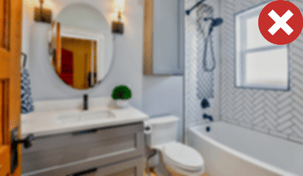
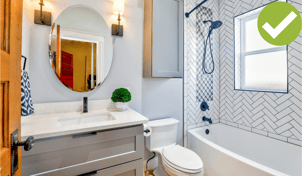
I decided to turn to Psychology to better understand this effect, and I stumbled upon a few interesting theories.
The first one is quite simple and revolves around the idea our attention is involuntarily drawn to bright and shiny (aka salient) objects, a behavior sometimes known as the magpie effect, and that is frequently leveraged for marketing purposes in our current, digital-first world.
The second is the result of groundbreaking research by psychologist Daniel Kahneman, proving our brain follows two different operating systems:
- System 1 is fast, instinctive, emotional and almost unconscious. 98% of our thinking goes through this system, which requires basically no effort from our side. This includes some unlearned human capabilities, like the ability to recognize objects.
- System 2 is slower, meditative and more rational. It makes up the remaining 2% of our thinking.
On a home research journey, we aim to find those properties that meet our needs but we are faced with an endless list of available options. Therefore, it would seem our brains turn to our intuitive system (1) for a first screening of potential candidate homes before later moving into a more rational and deep consideration state.
The Importance of Real Estate Images in Numbers
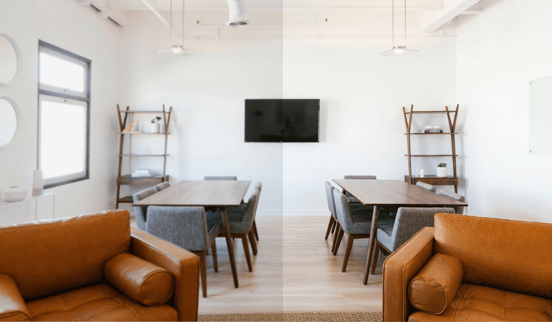
In order to quantify the impact images have on residential real estate transactions, we need to resort to figures.
The giant, short-term rental company Airbnb claims that properties featuring high-quality photographs are booked 24% more than listings with lower-quality images. Following those claims, at Carnegie Mellon University, they decided to put that to the test and analyzed images from 17,000 Airbnb listings. Their results suggest that hosts using 15 high-quality photos earn $2,455 a year more than hosts using 15 low-quality images.
If that works for short-term rental, why wouldn’t it work for property sales? Good photographs convey the idea that the product—or in this case, the property—is of high quality, which translates into better conversion rates. So it didn’t surprise me to see that listings with higher quality images sold 32% faster.
But what shocked me is that image quality also has an effect beyond conversion rates—and I’m talking about sale prices. In fact, listings with higher quality images in the $200,000 to $1 million range are usually sold for $3,000 to $11,000 more than those with lower quality images. Outstanding, isn’t it?
But Why Isn’t Everybody Using Quality Images in Real Estate?

Many scenarios can lead to a listing featuring low-quality images:
- In many cases, images are taken by the home owners or the realtors, either because of a lack of budget or simply because of time constraints. These professionals may not be knowledgeable about lighting, perspectives, and so on.
- Additionally, images are frequently taken with smartphones, which may be outdated or feature low-resolution cameras.
- Sometimes the owner doesn’t have access to the property (for example, when the owner lives far away, or when the current tenant makes it difficult to access the property as long as the lease is still ongoing). This can lead to publishing old, low-quality pictures of the property.
There are, however, a number of realtors who, aware of the potential of property images, resort to professional photography services for their property listings. In fact, roughly 35% of listings feature professionally-taken pictures—and they earn twice as much!
But even in those cases, they might encounter a different challenge. MLSs and portals frequently use resizing processes to bring all their listing images to the same size. When a brokerage or agent wants to use these images to create beautiful marketing content, the professional photos that were originally taken may have been downsized and degraded to a point that they are no longer suitable for printing.
Improving Property Image Quality in Real-Time
On our journey of building AI products to simplify the life of home buyers and realtors at Restb.ai, our engineers found a way of improving property images in real-time. We knew how challenging it was to always ensure high-quality photos that convert, so we decided to build a product that would enhance low-quality images and turned them into images that sell.
That’s how our AI Image Resizer & Enhancer was born.
Using a technique called upsampling (aka super-resolution), our artificial intelligence increases the image resolution by intelligently adding extra pixels to the original image. This is how we can increase an image’s resolution to match portal or MLS requirements without making them look pixelated, blurry or losing any quality.
And if you feel like you’d like to give it a go, you can reach out to us for a free consultation. We’d love to show you how your low-quality property images could look like! :)


comments